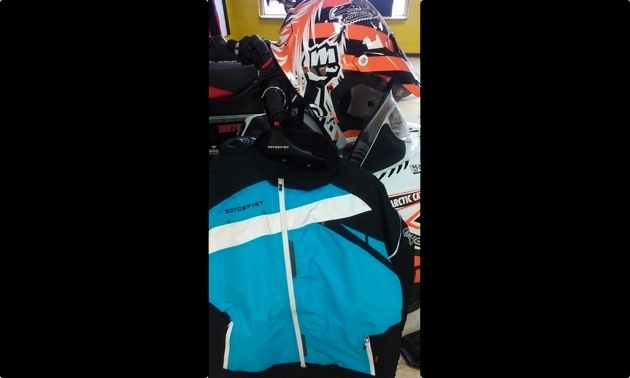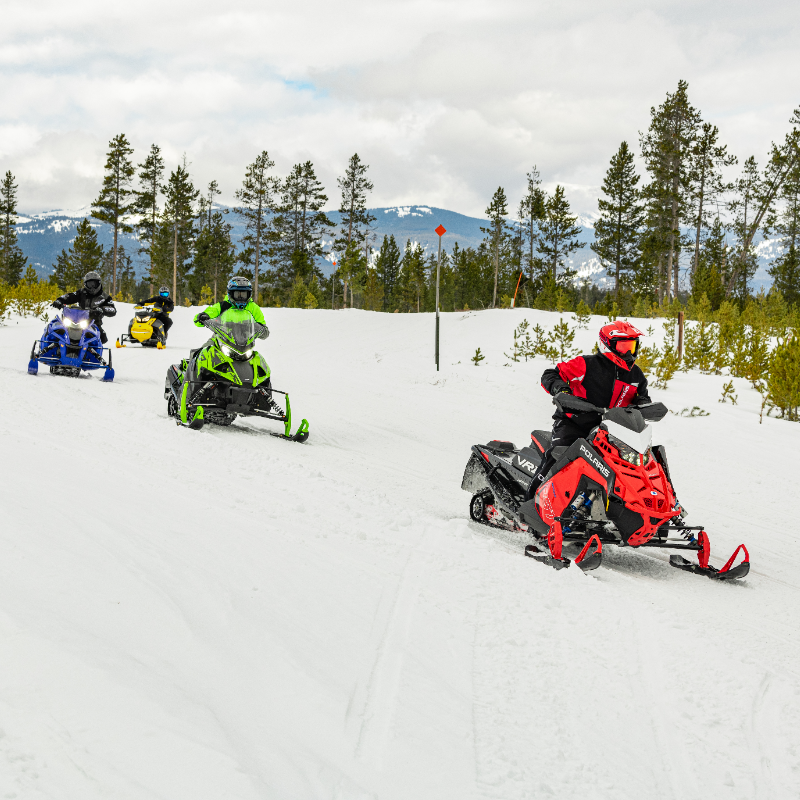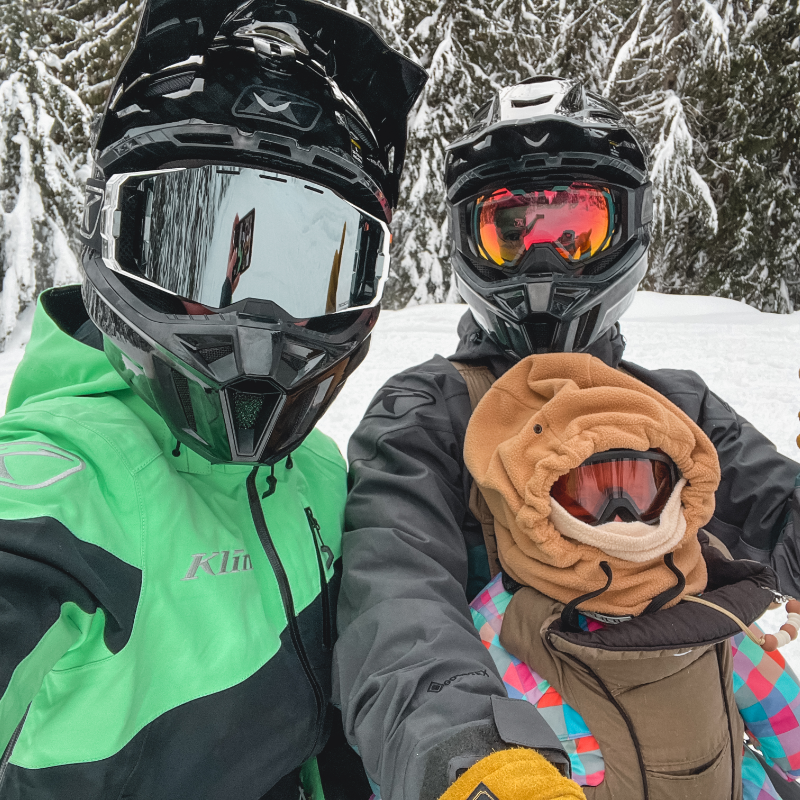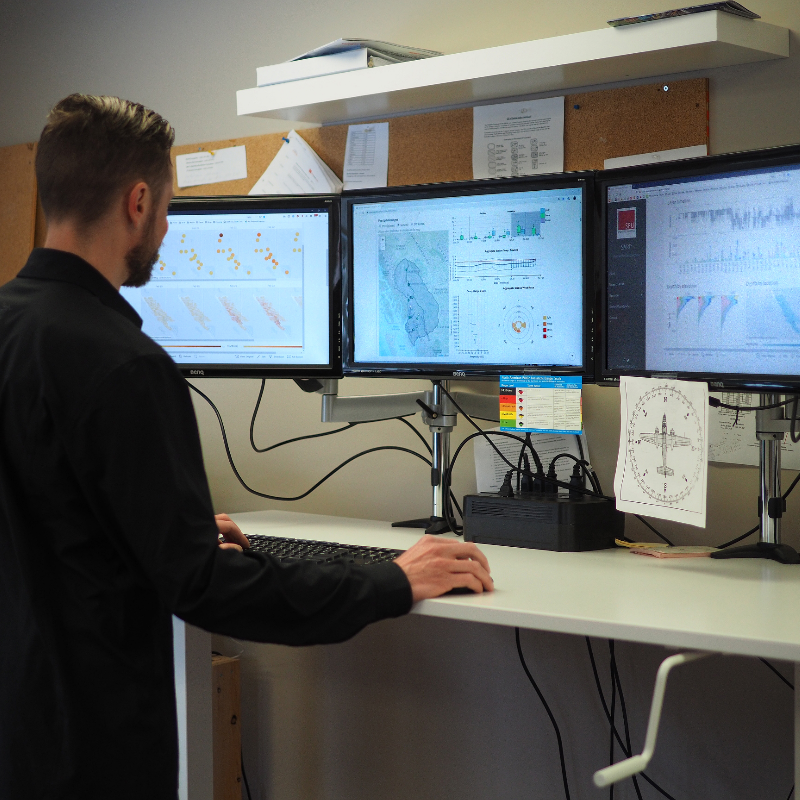So you’re venturing forth into the world of horsepower and deep, dry, untouched powder. This is an exciting time, for certain. Here are some tips to make sure you spend your dollars wisely. It’s easy to jump on the bling bandwagon when you purchase your new sled. Wraps, shocks, custom powder coating and other options are tempting, but are they necessary? First make sure you have some necessities factored into your overall budget for your upcoming adventure. These include:
- Transceiver: Also known as a beacon, this device allows for locating and searching for individuals buried in an avalanche. This is a must-have purchase. New technology is better, allowing for a quicker, more productive search when it really matters. Do not skimp on your avalanche transceiver, as it could be your or your loved one’s life at stake.
- Shovel: Your avalanche shovel is another necessity, and it’s quality should not be taken for granted. The old “yours for the price of $9.99” will not have the structural integrity of a shovel manufactured by one of the industry professionals. Be prepared to spend anywhere from $50 to $150 for a quality shovel. Some sledders choose to have two shovels: one to keep on their person at all times, which is a must, and another for helping yourself or others out of one of those epic stuck situations.
- Probe: Another key component for avalanche safety is an avalanche probe, a must for backcountry mountain riders. Probes allow rescuers to literally probe avalanche debris to locate buried individuals after a transceiver search has been successfully executed. Longer is better in this situation, so don’t cheap out.
- AST Level 1 course. Knowledge is power and can save your life. It is recommended that this be one of your first purchases before you take a mountain adventure. There are many providers out there, including Zac’s Tracs, Hangfire Avalanche Training, Frozen Pirate Snow Services and Trigger Point Snow Services, all of which host classes in a variety of locations across western Canada. The average cost of a class is between $300 and $350, with some providers offering discounts for individuals belonging to a snowmobile club.
- Backpack: Some will opt for an avalanche airbag, which has been proven to increase chances of survival in the event of an avalanche by increasing the flotation factor. At a cost of between $500 and $1200, your avalanche airbag can be financed into your snowmobile purchase to take the sting out of the price. Backpacks—even non airbag packs—are an essential component for backcountry survival. Everything you need to survive in the backcountry, including a first aid kit, food, fire starting tools and avalanche equipment, need to be on your person at all times, not packed away in a storage compartment on your snowmobile. Quite often if disaster strikes, rider and snowmobile will become separated, so always wear your lifesaving equipment and supplies on your person.
- Safety and first aid: Along with a general first aid kit, key purchases before you head out to the backcountry include a collapsible saw and multiple ways to start a fire in the wet, frozen backcountry. There are some inventive options out there that will not be expensive but are necessary before you head out for your first ride.
- Quality snowmobile-specific outerwear: No one wants to be wet and cold, especially when miles away from civilization, stranded up a mountain. Waterproof and wicking clothing including base layer, mid layer, outer layer, boots, socks and gloves make or break your ride experience and could in essence save your life. Spending the extra dollars on top quality gear such as Motorfist, Klim and Tobe will help you to stay warm, dry and safe on your adventures in the backcountry. A good quality helmet and goggles will also be a good investment. Find out more about winter clothing here.
- Club membership: Support those who maintain and preserve the areas that you ride in. Your membership purchase will facilitate things such as trail clearing and maintenance, shelter construction and maintenance, advocacy for lands and safety training. Money well spent for sure.
Many dealerships are happy to put together a package price for all of these essentials and can finance these products into your sale at the time of purchase, only adding a small amount to your monthly payment. It’s important to ride prepared and to know before you go. Before wrapping your sled in the latest and greatest design, before adding a turbo or aftermarket modification, please be sure you have considered the essential purchases outlined above.







